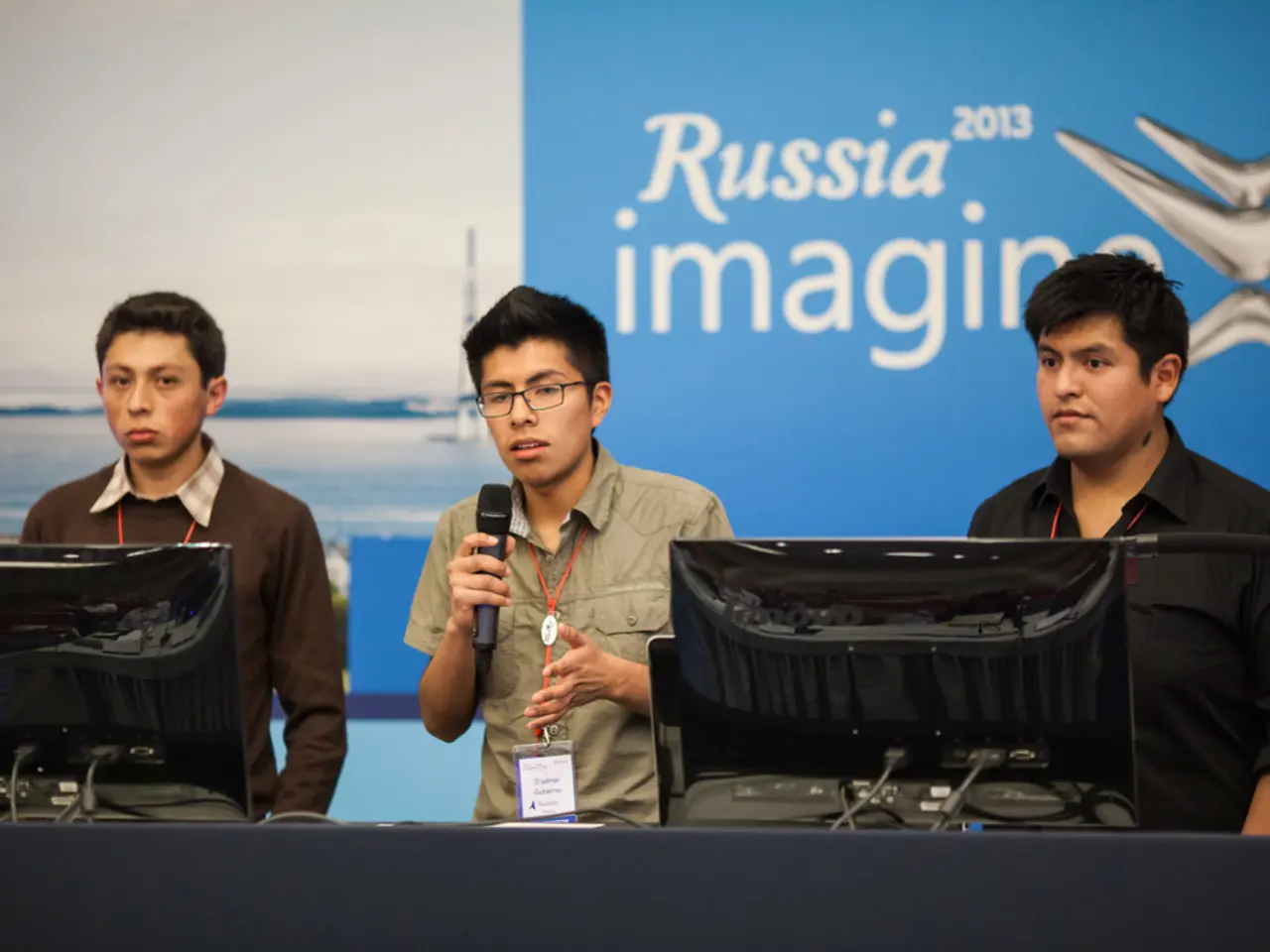Following Putin's victory in Alaska, Zelensky embarks on a critical journey to Washington to engage in crucial discussions with Trump. How much influence can Zelensky exert on Trump during their high-stakes meeting?
The historic Trump-Putin summit in Alaska in August 2025 was a significant symbolic moment for US-Russia relations, but fell short of achieving a breakthrough on the ongoing Ukraine conflict. Held under the Chugach mountains glistening in the summer sun, the summit was hastily put together on a Friday afternoon [6].
The meeting, the first bilateral meeting between the two presidents since 2019, occurred amid the ongoing Ukraine war and was aimed at possibly negotiating peace [1][3][5]. However, the discussions about major territorial concessions in the peace talks are seen as a win for the Kremlin, as they shift the focus away from the territories Russia has already captured by force [2].
From Russia’s perspective, the summit was more about redefining its relationship with the United States and asserting Russia’s place on the global stage, rather than focusing on Ukraine itself. Moscow used the occasion as political theatre to showcase Putin’s leadership and Russia’s diplomatic relevance [2]. For Russia, the summit was a diplomatic gain—any meeting with the US president underlines Kremlin legitimacy internationally, regardless of any concrete agreement on Ukraine [4][5].
For the US, the summit carried risks of endorsing a flawed peace plan unacceptable to Ukraine and NATO, which could fracture transatlantic relations. Analysts speculated that a constructive outcome would require a balanced ceasefire and recognition of Ukraine’s sovereignty and defense rights, with NATO limiting its expansion or troop presence in Ukraine as part of a broader framework. However, the summit did not deliver such an accord, leaving Ukraine’s fate unresolved and the conflict ongoing [3][5].
The summit ended without a ceasefire deal or substantial progress, and Russia did not significantly soften its maximalist demands. There were some signs Putin might limit territorial demands to the Donetsk region, but no agreement on demilitarization or territorial recognition was reached [1][3][5]. Notably, Ukraine was absent from the talks, raising concerns about the process’s legitimacy in Kyiv and among NATO allies [1][3][5].
As the success or failure of the peace talks is expected to dominate the news agenda in the days and weeks ahead, there are concerns that Trump and Putin may demand Kyiv to withdraw from strategic territory in the Donbas region of Ukraine that has been annexed by Russia but not yet conquered [3]. The discussions about a quick peace deal could potentially cast Ukraine and Europe as the real obstacles to peace, if they say no to a deal that Trump supports.
In a twist, President Volodymyr Zelensky of Ukraine is heading to Washington for direct talks with Trump, with the about-face by the White House being a major concern [7]. The reporter also mentioned that the Ukrainians and the Europeans are in Trump's way in pursuing a peace deal in Ukraine. A radically conservative news network confided that Trump is determined to exit Biden's war in Ukraine, and has changed his mind about a ceasefire in Ukraine, now advocating for a full peace deal, which aligns with the Kremlin's long-standing preference [3].
During the summit, Trump appeared deferential to Putin, allowing Putin to speak first in the joint statements and suggesting a possible reintroduction of Trump as a fellow strongman by Putin. Putin confidently suggested Trump visit Moscow during the summit [4]. Trump applauded Putin as he walked along a red carpet, but the White House and Kremlin press pools gathered for a joint news conference that did not occur [1][4].
Despite the anticlimactic outcome of the summit, Ukraine and Europe may be pressured to make major territorial concessions in the peace talks, which could be a red line they are unwilling to cross [2]. The Alaskan summit, while anticlimactic in terms of the Ukraine conflict, was a significant moment in the symbolic re-engagement between Trump and Putin, illustrating Russia’s diplomatic positioning and Putin’s leadership narrative, rather than achieving a breakthrough on Ukraine peace. The unresolved issues and Ukraine’s exclusion highlight continuing complexities and mistrust surrounding the conflict [2][4][5].
References: 1. The New York Times 2. The Washington Post 3. CNN 4. The Guardian 5. BBC News 6. Reuters 7. Politico
- The summit between Trump and Putin, held amid ongoing war-and-conflicts in Europe, including the conflict in Ukraine, aimed at possibly negotiating peace, but the proceedings did not deliver a substantial breakthrough.
- The Alaskan meeting between the two presidents served as a symbol of world politics, as Russia sought to redefine its relationship with the United States and assert its place on the global stage, especially in terms of Ukraine, which remains a contentious general-news issue.






